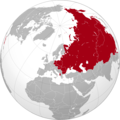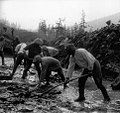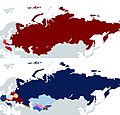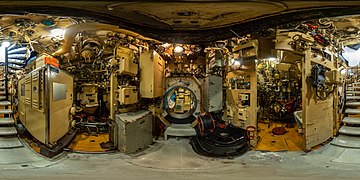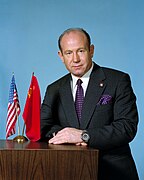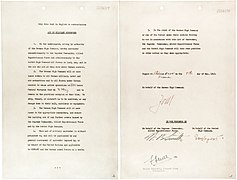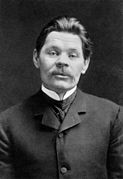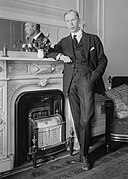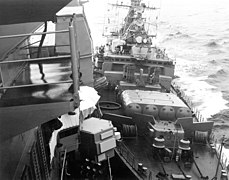Introduction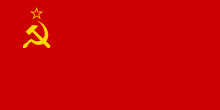 The Union of Soviet Socialist Republics (USSR), commonly known as the
Soviet Union, was a
transcontinental country that spanned much of
Eurasia from 1922 to 1991. It was the
largest country in the world by area, extending across
eleven time zones and sharing
land borders with twelve countries. An overall successor state to the
Russian Empire, the country was nominally organized as a
federal union of
fifteen national republics, the largest and most populous of which was the
Russian SFSR; in practice, both
its government and
its economy were
highly centralized until its final years. It was the
world's third-most populous country and
Europe's most populous country. As a
one-party state governed by the
Communist Party of the Soviet Union, it was a flagship
communist state. Its capital as well as its largest city was
Moscow. Other
highly urbanized centers included
Leningrad,
Kiev,
Tashkent,
Baku,
Kharkov, and
Minsk.
The Soviet Union's roots lay in the October Revolution of 1917, which saw the Bolsheviks overthrow the Russian Provisional Government that formed earlier that year following the February Revolution that had dissolved the Russian Empire. The new government, led by Vladimir Lenin, established the Russian Soviet Federative Socialist Republic (RSFSR), the world's first constitutionally socialist state. The revolution was not accepted by all within the Russian Republic, resulting in the Russian Civil War between the Bolsheviks and the anti-communist Whites. The RSFSR and subordinate Soviet republics were merged into the Soviet Union in December 1922. Following Lenin's death in 1924, Joseph Stalin came to power, inaugurating a period of rapid industrialization and forced collectivization that led to significant economic growth, but also contributed to a famine between 1930 and 1933 that killed millions. The forced labour camp system of the Gulag was also expanded in this period. During the late 1930s, Stalin conducted the Great Purge to remove actual and perceived opponents, resulting in mass death, imprisonment, and deportation. In 1939, the USSR and Nazi Germany signed a nonaggression pact despite their ideological incongruence; nonetheless, in 1941, Nazi Germany invaded the Soviet Union in the largest land invasion in history, opening the Eastern Front of World War II. The Soviets played a decisive role in defeating the Axis powers in 1945, suffering an estimated 27 million casualties, which accounted for the majority of Allied losses. In the aftermath of the war, the Soviet Union consolidated the territory occupied by the Red Army, forming various satellite states, and undertook rapid economic development which cemented its status as a superpower. Following World War II, ideological tensions with the United States eventually led to the Cold War. The American-led Western Bloc coalesced into NATO in 1949, prompting the Soviet Union to form its own military alliance, commonly known as the Warsaw Pact, in 1955. Neither side ever engaged in direct military confrontation, and instead fought on an ideological basis and through proxy wars. In 1953, following Stalin's death, the Soviet Union undertook a campaign of de-Stalinization under the leadership of Nikita Khrushchev, which saw reversals and rejections of Stalinist policies. This campaign caused tensions with Communist China. During the 1950s, the Soviet Union rapidly expanded its efforts in space exploration and took an early lead in the Space Race with the first artificial satellite, the first human spaceflight, the first space station, and the first probe to land on another planet ( Venus). The Cuban Missile Crisis of October 1962 was the closest the Cold War came to escalating into full-scale nuclear war. The 1970s saw a brief détente in the Soviet Union's relationship with the United States, but tensions emerged again following the Soviet invasion of Afghanistan in 1979. In 1985, the last Soviet leader, Mikhail Gorbachev, sought to reform the country through his policies of glasnost and perestroika. In 1989, various countries of the Warsaw Pact overthrew their Soviet-backed regimes, and nationalist and separatist movements erupted across the entire Soviet Union. In 1991, amid efforts to reform and preserve the country as a renewed federation, an attempted coup d'état against Gorbachev by hardline communists prompted the three most populous and economically developed republics—Ukraine, Russia, and Belarus—to secede from the Union. On December 26, Gorbachev officially recognized the dissolution of the Soviet Union. Boris Yeltsin, the leader of the RSFSR, oversaw its reconstitution into the Russian Federation, which became the Soviet Union's successor state; all other republics emerged as fully independent post-Soviet states. During its existence, the Soviet Union produced many significant social and technological achievements and innovations. It had the world's second-largest economy and largest standing military. An NPT-designated state, it wielded the largest arsenal of nuclear weapons in the world. As an Allied nation, it was a founding member of the United Nations as well as one of the five permanent members of the United Nations Security Council. Before its dissolution, the USSR was one of the world's two superpowers through its hegemony in Eastern Europe, global diplomatic and ideological influence (particularly in the Global South), military and economic strengths, and scientific accomplishments. ( Full article...)Entries here consist of
Good and
Featured articles, which meet a core set of high editorial standards.
The Ministry of Justice of the Union of Soviet Socialist Republics (USSR) ( Russian: Министерство юстиции СССР, Ministerstvo Yustitsii SSSR), formed on 15 March 1946, was one of the most important government offices in the Soviet Union. It was formerly (until 1946) known as the People's Commissariat for Justice ( Russian: Народный комиссариат юстиции, Narodniy Komissariat Yustitsi'i) abbreviated as Наркомюст (Narkomiust or sometimes known in English as "Narkomyust"). The Ministry, at the All-Union (USSR-wide) level, was established in the 1936 Soviet Constitution, and was in turn based upon the People's Commissariat for Justice of the Russian Soviet Federative Socialist Republic (RSFSR) formed in 1917, with the latter becoming subordinate, along with the other republican Narkomyusts, to the Union-level People's Commissariat of Justice of the USSR. The Ministry was led by the Minister of Justice, prior to 1946 a Commissar, who was nominated by the Chairman of the Council of Ministers and confirmed by the Presidium of the Supreme Soviet, and was a member of the Council of Ministers. The Ministry of Justice was responsible for courts, prisons, and probations. Further responsibilities included criminal justice policy, sentencing policy, and prevention of re-offending in the USSR. The Ministry was organised into All-Union and Union departments. The All-Union level ministries were divided into separate organisations in the Republican, Autonomous Oblast, and provincial level. The leadership of the Ministry of Justice came from notable Soviet law organisations from around the country. ( Full article...)
Selected picture
T-80 tanks in the Red Square during the 1991 Soviet coup d'état attempt. Did you know... -
Selected quoteWikiProjectsSelected biography - Ivan Khristoforovich Bagramyan, also known as Hovhannes Khachaturi Baghramyan (2 December [ O.S. 20 November] 1897 – 21 September 1982), was a Soviet military commander of Armenian origin who held the rank of Marshal of the Soviet Union. During World War II, Bagramyan was the second non- Slavic military officer, after Latvian Max Reyter, to become a commander of a front. He was among several Armenians in the Soviet Army who held the highest proportion of high-ranking officers in the Soviet military during the war. ( Full article...)
General imagesThe following are images from various Soviet Union-related articles on Wikipedia.
Selected anniversaries for July
More Did you know (auto generated)
Related portalsRecognized content
|




















